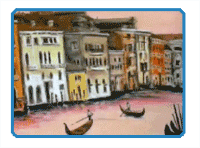
By Matt Fussell
There are two types of pastels-oil and soft(or chalk). Although some of the techniques used to draw with both types of pastels are similar, oil pastels and soft pastels are uniquely different. This page deals with techniques of soft pastels.
Soft or chalk pastels are made up of a pigment that is held together by a gum binder. Soft pastels have a chalky consistency that produces intense colors. The nature of soft pastels allows the artist to layer and mix colors easily on the surface. Thus, a finished pastel drawing has many of the characteristics of a finished painting. Many people consider pastel a painting medium, even though the process of applying the medium is clearly drawing.
Artists may chose to work on a variety of surfaces including paper, canvas, cardboard, or masonite. Most commonly, paper is used. Colored papers are most often chosen because of the nature of the chalk pastels. The tooth or texture of the paper also affects the finished image. A heavier tooth or rougher texture of the paper creates a grainy image while a smoother texture creates a sharper image.
When you are creating a drawing of a landscape with pastels, you must consider drawing the image in a certain order. It is advisable to work from the area that is furthermost away to the areas that are closest. In other words, you should complete the "background" first, "middleground" second, and then the "foreground" last. Essentially working from the top of the surface to the bottom of the surface.
In the following video art lessons, I show you how to draw the landscape with soft pastels...
Here are some more art lessons that you may like...